I was born and raised in Kansas, so needless to say I didn’t spend too much time around water growing up. But with my latest trip for Travois, I had the pleasure of visiting the Red Cliff Band of Lake Superior Chippewa on the beautiful shores of Lake Superior in northern Wisconsin.
Picturesque sailboats dotted the sparkling blue water just offshore from the band’s Legendary Waters Resort and Casino. And beneath the water’s surface lies something I didn’t expect at all – a shipwreck!
The Fedora
Ever since that fateful night of September 20, 1901, the remains of the 282-foot long Fedora steamship have been entombed in 10 feet of water north of Buffalo Bay. The Fedora’s captain ran the boat aground when a kerosene lamp on board exploded and the entire vessel became engulfed in flames. The 17-man crew survived, but the Fedora did not. Today, portions of the ship’s frame protrude from the water, as seen in the photo below, attracting both kayakers and scuba divers.
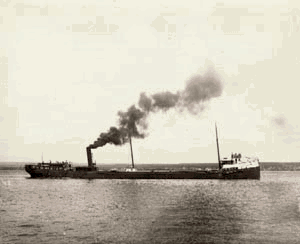
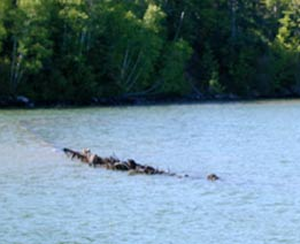
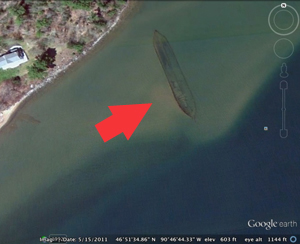
Photos are courtesy of the University of Wisconsin Sea Grant Institute and Google Earth.
But the Fedora is just one of 65 historic vessel losses in the Lake Superior waters of Wisconsin (when combined with the losses in Wisconsin’s Lake Michigan waters, the total number of losses in Wisconsin’s Great Lakes waters increases tenfold to 651).
Joining the Fedora in the waters near Red Cliff are several other boats with interesting tales of life and loss.
The Sevona and the Pretoria
In September 1905, four years after the Fedora’s inferno, a strong storm took two other ships near the Apostle Islands.
The steel Sevona and its 6,000 tons of iron ore cargo ran aground on the Sand Island Shoals when storm conditions made it impossible for the captain to see. While the captain had previously survived a shipwreck in Ireland’s waters, he (and six other crew members) did not survive the turbulent waters of Lake Superior that night.
But the Sevona has not had a peaceful rest: the Army Corps of Engineers ignited 500 pounds of dynamite on the wreckage to give other boats safe passage and hundreds of tons of metal have been scrapped from her since she sunk. The Sevona now lies 20 feet under water and is on the National Register of Historic Places.
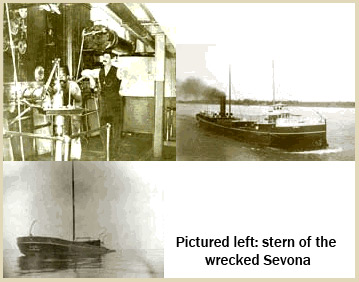
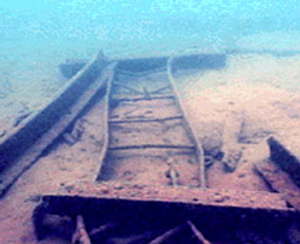

A massive wooden schooner-barge, the Pretoria was also carrying ore when its steer gear failed during the September 1 storm. The storm battered the ship to pieces, taking half of its 10 passenger crew with it when it sunk 55 feet off Outer Island’s waters. The Pretoria is also on the National Register of Historic Places.
The Ottawa
The 610-ton Ottawa was the largest and most powerful tug on the Great Lakes from the time of its launch on May 5, 1881, to its demise 28 years later on November 29, 1909.
The Ottawa was used for salvage operations, including the dismantling of the Sevona wreckage. Alongside other tugs, the Ottawa worked for more than a week to free the steamer James H. Hoyt from where it was grounded on a shoal near Outer Island. The tug succeeded and delivered the steamer safely to Red Cliff Bay, but overnight a fire of unknown origin broke out on the Ottawa and consumed the vessel. It now lies in about 15 feet of water off of Red Cliff Bay.
Parallel to the Ottawa are the remains of the screw steam freighter, the H.D. Coffinberry. The Coffinberry’s 39 years of service included several mishaps (including a few groundings and collisions) and ended with not a wreck, but abandonment, in 1913.





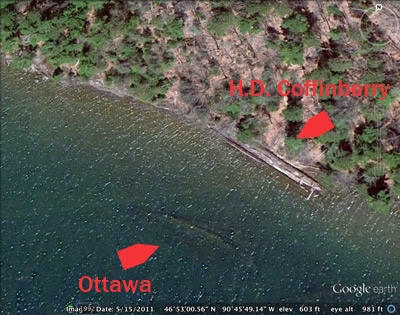
Pictured top to bottom: The Ottawa; the Ottawa crew; the stern and keelson underwater; the radiator underwater; the engine bed underwater; and an aerial view of the H.D. Coffinberry and the Ottawa underwater.
With hundreds of other sunken ships in the Great Lakes waters, there are just too many stories of fascinating final voyages for me to share here. But I encourage you to go to my source, Wisconsin’s Great Lakes Shipwrecks, to satisfy your curiosity for more.
I am open water certified in scuba diving, so maybe some day soon this middle-of-the-country native can submerge herself — literally—in this captivating bit of history.


Love this post! Thanks so much. We were just kayaking near Red Cliff today and had some questions about the Fedora (which was a little creepy but SO COOL to kayak over). Thanks for all this info!
Ana & Zach – Chicago
Hi, Ana and Zach – Glad it was helpful! Thanks for reading!